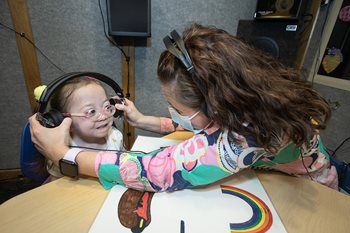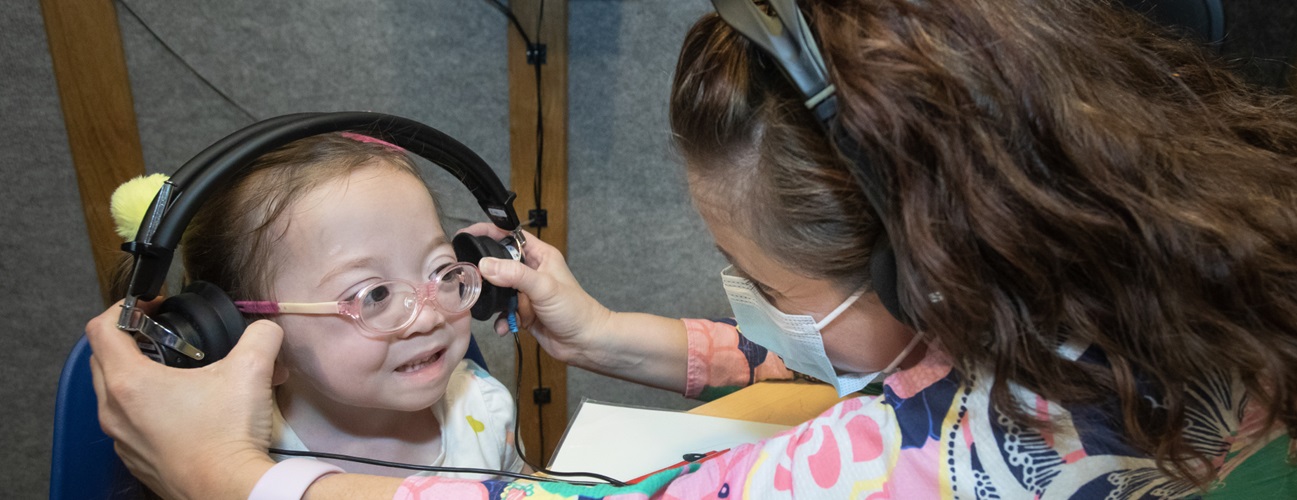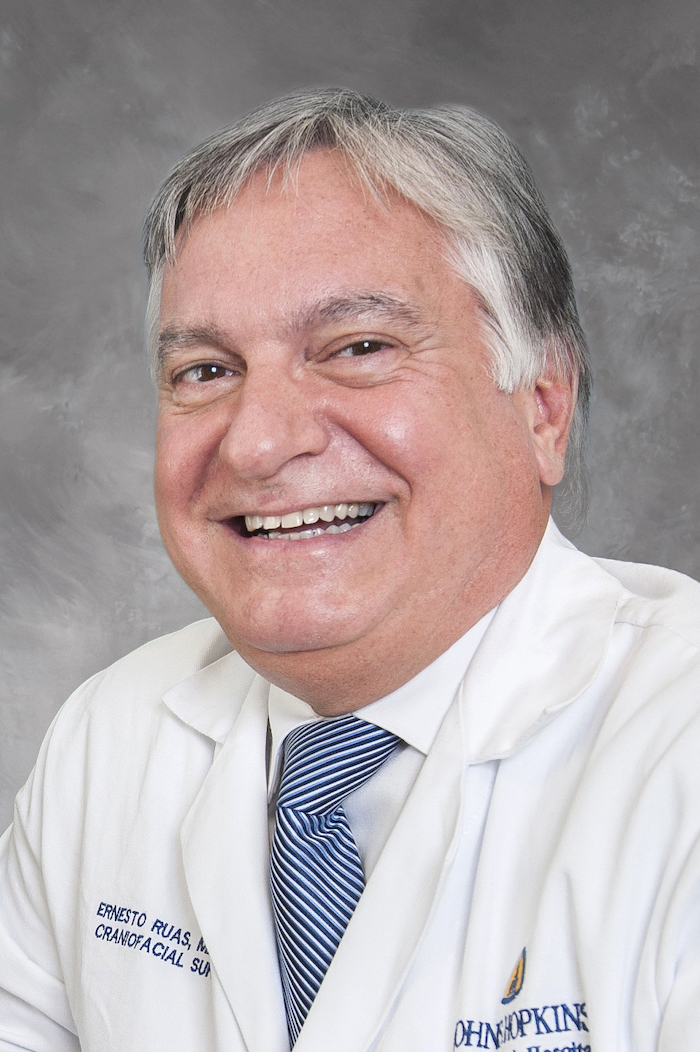Patient Story
Cleft Palate: Bree’s Story
Patient Story Highlights
- Bree wasn’t breathing when she was born.
- Cleft palates happen in about one in every 800 live births.
- At only 5 days old, Bree was flown to the Johns Hopkins All Children’s Hospital in St. Petersburg, Florida, and admitted to the neonatal intensive care unit (NICU).
 Bree with audiologist Robin Edmiaston, AuD., CCC-A
Bree with audiologist Robin Edmiaston, AuD., CCC-ABree’s mom, Areen, will never forget the day her now 6-year-old daughter was born. Thinking back on it brings her to tears.
“Bree wasn’t breathing when she was born,” reflects Areen, Bree’s mom.
She and her husband, Boyd, knew there could be complications at birth. During her pregnancy, Bree wasn’t measuring properly on sonograms and she was diagnosed with skeletal dysplasia. There are hundreds of different dysplasias, but they wouldn’t know her diagnosis until she was born and further testing could be done.
“We were kind of in denial until her birth,” explains Areen. “My husband and I aren’t very tall people, so we thought she might just be small.”
Bree was being treated at a local Tampa hospital, but her breathing problems persisted.
“She wasn’t breathing well. They didn’t know why and weren’t equipped,” Areen says.
Tiny, at only 5 days old, she was flown to the Johns Hopkins All Children’s Hospital in St. Petersburg, Florida, and admitted to the neonatal intensive care unit (NICU).
“The way they had everything set up for Bree, she looked like she was finally resting for the first time,” Areen says. “They knew exactly what to do to make sure that she was comfortable. We both just knew she was in the right place.”
Turns out, Bree is very special. So special, in fact, that she is literally one in a million. In the NICU, Bree had genetic testing that showed her diagnosis: a rare, one-in-a-million skeletal dysplasia called Kniest dysplasia. This is when they also discovered hearing loss and a cleft of the soft palate.
“When they did their rounds every morning, everybody came together, and we were involved in the whole entire process. We were never left out of the discussion,” Areen explains.
The audiology team immediately started following Bree, and she is now under the care of audiologist Robin Edmiaston, AuD., CCC-A, at the Johns Hopkins All Children’s Outpatient Care Center in Tampa.
“Bree is a joy to work with! Bree has been so successful in her language acquisition and speech and language development due to the dedication her family has to her care,” Edmiaston says. “She has a bilateral hearing loss, which can fluctuate based upon the health of the middle ear system. She’s been fit with hearing aids for both ears, and following her closely has been key to ensure that she hears all of her speech sounds to promote speech and language development.”
The family also met Ernesto Ruas, M.D., who specializes in plastic surgery and cleft and craniofacial surgery, and would be the surgeon repairing Bree’s palate.
“Cleft palates happen in about one in every 800 live births,” Ruas says. “It’s a fairly common condition. The first thing I always tell the parents is to please don’t go on a guilt trip. This is not your fault. I try to approach it in a positive fashion because it is a bump in the road, but I always reassure them that this is a fixable problem.”
Most don’t have a known cause, and at least half of cases of cleft lip and palate are diagnosed via ultrasound prenatally.
“Although in all fairness, it’s hard to see a palate on a prenatal ultrasound,” Ruas says.
So in those cases like Bree’s, it wasn’t identified until she was born.
“It was very scary, but we met with Dr. Ruas and every day had a meeting with the team, doctors, and you build trust and relationships with them — we knew she was going to get the best care,” Areen says.
Ruas strongly encourages families to do their research on picking a surgeon and make sure to ask a lot of questions.
“We see many babies and children from other institutions who need their surgeries redone, so research and choosing the right surgeon is critical,” Ruas says.
Bree was about 6 months old when she had surgery, and within a few weeks, had her gastrostomy tube (“g-tube” — a feeding tube) removed and she began bottle feeding.
Frequently with an incomplete cleft, it’s only one operation. But with Bree, she is a special case where she might need a follow-up surgery due to air affecting her speech with “S” and “Sh” sounds.
“Ten percent will need further surgery to improve their speech, and she’s one of them,” Ruas says.
While the family is in discussion with Ruas about a possible surgery, Areen and Boyd are so proud of what their little girl has already overcome, including her recent kindergarten graduation.
“This world is not made for her size, and we want her to learn how to interact with that world, because it’s important,” Areen says. “There's no doubt she's going to do great things and she has a great support system. Everyone that meets her just falls in love with her because she has such a sweet spirit.”
“We know she's going to face way more challenges than most of us are,” Boyd says. “Our biggest hope is that she is fiercely independent and has a heart full of love for the Lord.”
Areen and Boyd both say getting Bree care with audiology, speech therapy (for feeding) and physical therapy in less than a year was a game changer in her progress today.
“It changed the projection of where she is. Early intervention is so important,” Areen says.
Bree's Surgeon
Cleft and Craniofacial Clinic at Johns Hopkins all Children's Hospital
The cleft and craniofacial team at Johns Hopkins All Children’s Hospital in St. Petersburg, Florida, treats patients with congenital and acquired abnormalities of the head and neck. The most common conditions we treat include cleft lip and palate, craniosynostosis, hemifacial microsomia, facial paralysis, and deformities of the ears and jaws.



